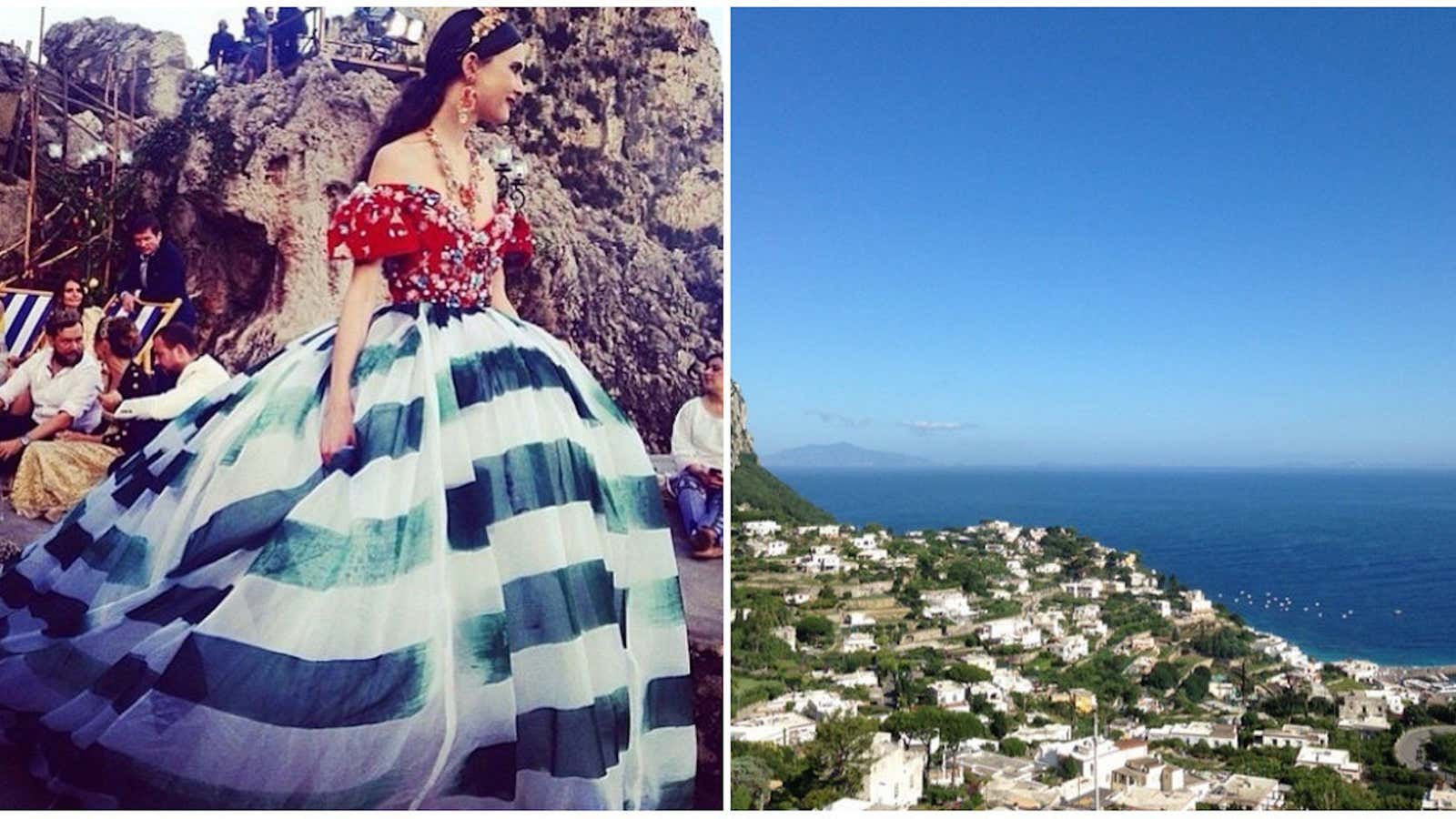Dolce and Gabbana’s alta moda show—their Italian version of “haute couture”—brought 220 guests (including European aristocrats, at least two princesses, and one representative shopping on a Middle Eastern client’s behalf) to the rocky shore of Capri’s La Fontelina beach club. There were crashing waves, garlands of lemons and bay leaves, and sailor-shirted waiters bearing pink champagne. The Wall Street Journal’s Christina Binkley boarded 51-year-old designer Stefano Gabbana’s yacht while attending the event, and reported that it has five cabins, eel-skin covered walls, and a mirrored exterior to reflect the sea. It also has black toilet paper.
Regardless of how unappealing wiping one’s nether regions with densely dyed toilet paper may sound, the toilet paper is a testament to the designer’s unwillingness to compromise aesthetics for such petty concerns as cost or common sense. And really, that’s what couture is all about.
In addition to the event’s soaring opera and “Mambo Italiano” soundtrack, al fresco dinner, and handsome Italians hired to help models enter by boat, there were, of course, the clothes: floor-length hooded lynx furs and knee-high gators, high-waisted two-piece bathing suits to recall the mid-century dolce vita (a running theme for the designers), hand-painted gowns depicting the Amalfi coast and baroque patterns, 18-carat gold sandals, and crowns worthy of either Madonna (biblical or pop star). There were slightly less ostentatious—and perhaps more beautiful—offerings too: three-quarter-sleeved dresses in wide, hand-painted stripes and an all-black sheath that looked made for the Italian actress Monica Bellucci—one of Dolce and Gabbana’s modern-day muses.
The well-documented excesses of couture may sound crazy—prices for this collection started at $40,000—but there are customers for it. By the day after the event, clients had purchased sixteen of the one-of-a-kind dresses. (Four were sold before the show was even over.) And in an age of increasingly fast fashion, there is no denying the impressiveness of these special, hand-made garments.
Last year around this time, Dolce and Gabbana were convicted of tax evasion, allegedly failing to pay about €40 million for 2004 and 2005. In April, they were denied appeal. The designers’ “dolce vita” may be built upon some tenuous foundations, but like Fellini’s film of the same name, their work is emblematic of a uniquely Italian brand of sensual hedonism.
In some cases—black toilet paper—it reads as parody, in others as sheer glamour. For most of us, it’s fantasy. But that’s the beauty of couture.
